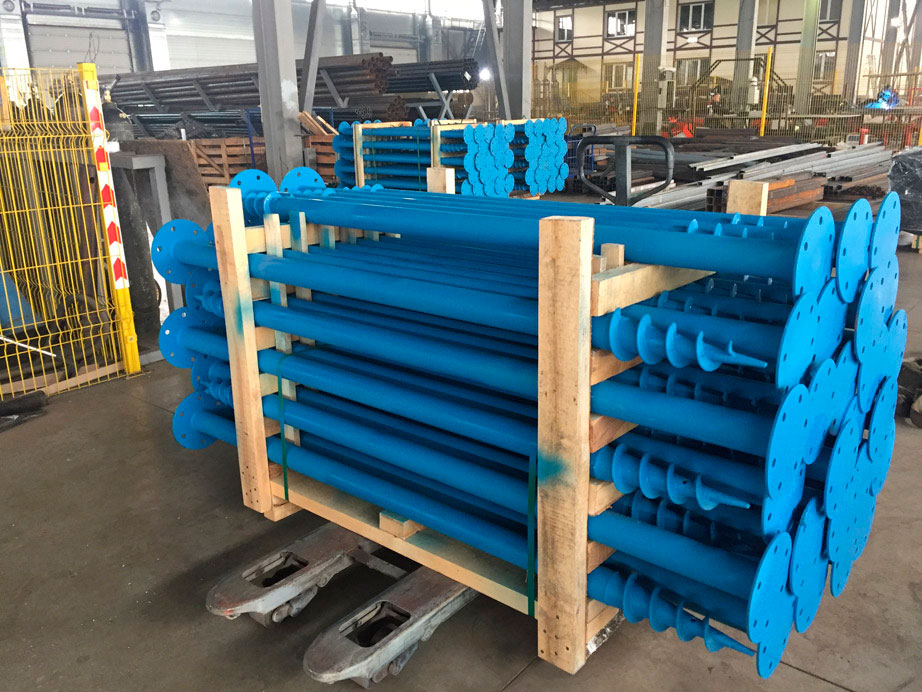We use cookies
While viewing our website pages, you agree that we process your personally identifiable information using metric programs. Read more
Understand, thanksWhen constructing on rock, clay, and similar soils, the selection of foundation type presents no obstacles. Nonetheless, the construction of structures on loose soil necessitates the application of proficient skills in selecting the foundation type, arranging the structural components, and precisely assessing the load-bearing capacity of the supporting components of the foundation on sandy soil.
Sand, which is distinguished by varying grain sizes, is a prevalent form of loose rock. When builders receive the results of geological surveys on the construction site, they often feel dismayed when they encounter mentions of sand in the documents. Nonetheless, it is important to note that not all sand is created equally. It is feasible to construct a solid foundation, even for a multi-story structure, on sandy soil, as coarse-grained sand ranks second in terms of stability, after rock formations. Sand with a coarse grain presents minimal challenges for builders, as its grains with diameters of 1-2.5 mm compact well on their own. Moreover, in the presence of a minimal amount of clay or loam, larger grains can effectively function as compaction agents. The circumstance is distinct with dusty sand, which falls under the category of intricate soils suitable for construction. Sands with dust require a meticulous approach when choosing a foundation type.
Whenever designing a structure on sandy soil, it is important to consider the proximity to groundwater. Dusty sand does not absorb moisture, but it also does not prevent water from infiltrating into the sandy layers. This often leads to subsurface flows in such areas. Furthermore, during soil freezing, there is an upward force exerted on foundation structures, which should be taken into account during foundation design.
What type of foundation is most suitable for sandy soil, thereby ensuring a robust and dependable foundation for a building, thereby guaranteeing a long-term trouble-free operation? There are several options.
Another type of foundation for load-bearing structures is the helical screw pile foundation, which is preferable for less stable sandy soils. Why choose this construction? The explanation is straightforward. The helical pile is an impeccable support that effectively transfers the weight of the building to deeply seated stable soils.
Constructing a foundation on sandy soil using helical piles is a swift process that requires minimal earthwork compared to other foundation types. The screw-type pile is installed in open spaces as well as densely built areas. Foundation installation can be done manually, and for complex configurations, substantial weight, and larger dimensions of piles, specialized equipment such as a hydraulic drill or pile driver is employed.

Piles for Sandy Soil The "Egoza" plant's helical pile can meet any requirements for length and configuration of the supporting element. Even in the case of dusty sands, a double-bladed pile will induce some compaction of the powdery soil. Fastening using self-drilling parts in dense, deep-seated rock formations will establish a stable base for a house or other structure on flat or sloping terrains.
If the objective is to establish a stable foundation on a site closely adjacent to a hill, the challenge lies in the uneven height of supports and the heterogeneity of rock formations. The utilization of self-drilling piles with varying configurations and equal load-bearing capacity solves both problems simultaneously. Additionally, the use of screw-in rods proves to be an effective method for creating a reliable foundation in coastal areas near rivers and seas, where sandy soils are more prevalent than rocky or clayey ones.
When the installation of a pile foundation is carried out by the skilled professionals of "Egoza" company, there is no need to worry about the correctness of constructing the structural framework. However, when independently forming the base for a building using helical piles, it is important to follow a specific sequence of actions.
A pile-screw foundation is a viable option when confronted with a loose soil condition. Regardless of the site's continuous instability, a screw pile that reaches a solid layer ensures the reliability and stability of the structure.
When utilizing helical supports on sandy soils, it is imperative to adhere to the following guidelines:
Helical screw piles can provide a certain degree of cost savings in foundation work, especially when using coarse-grained sand. What is the economic impact of this?
When choosing a foundation with "self-tapping" load-bearing elements, consult with the experts at "Egoza" plant - they can recommend the optimal configuration of the support rod, taking into account the specific characteristics of sandy soils in your area.
We sincerely appreciate your interest in our products.
You are welcome to submit a request for estimation of your project by our specialists.
The term of the project estimation is 2 business days.
After submitting the form, we will contact you within 15 minutes.
While viewing our website pages, you agree that we process your personally identifiable information using metric programs. Read more
Understand, thanks